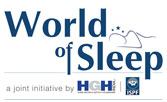“Embrace the language of the millennials, go mobile,” say retailers for digital advertising.
Driving customers into stores has long been the end goal of every advertising campaign. With the advent of social and mobile, traditional approaches are limited in their ability to continue achieving their goals, as consumers demand more than just brand awareness to make their decisions.
The consumer’s time with newspapers and magazines has decreased dramatically, replaced by the smartphone and the Internet.
Brands restrict Digital Marketing advertisements to Brand Awareness. Digital social channels offer a great way to reach out to the target audience with unified messaging. They also provide opportunities to deliver messages customized to individual preferences. This enables customers not only to be informed of the product but also be able to act based on such information. Digital channels offer the best Moment of Motivation factor in advertising, which drives sales.
Digital marketing strategies and advertisements must go beyond brand awareness. They should be local, personal and contextual. Local needs to be redefined to include more than a zip code. It must answer the questions: of who, what and when, thus encompassing context and connectivity.
“Have seen how Domino’s Pizza redefined itself into an e-commerce powerhouse but most of their business happens at the physical stores. I think they have demonstrated the perfect recipe for driving in-store sales,” says Mr Vibhar Baya, a retailer from Udaipur. Indeed, Domino’s is a great case study of new-age marketing. First of all, the organization thinks of itself as an e-commerce business that just happens to serve pizza from retail stores. Second, they have adopted the ‘mobile-first’ approach. Building native iOS and Android apps helped them drive sales through their mobile apps. Using their online and mobile experience, Dominos has redefined the ‘local’ and personalized experience. Consumers can check the menu online or on their mobile app and order a takeaway or eat at the outlet.
A telecalling backend helps complete the missing nuances. This strategy drives consumers to the local franchises. Not many brands have achieved the kind of success Domino’s has seen. And it is replicable with contextual tweaks.
The Challenge for Product Advertising
“The biggest challenge mattress retailers face is the product we sell,” says Mr Rakesh a linen retailer. People prefer to come in and lie down on a bed to determine what’s right, in terms of support and what’s not. “These days, people research online before they come into the store to buy.” The promotion experience, be it online or offline, is important in providing information the buyers are looking for before they come into the store. Brands need to have an integrated approach to promotional advertising. Today, the traditional method alone does not work. The challenge is how to promote through a mass reach channel but drive traffic to local stores.
Mattress brands still depend quite a bit on print, and television commercials just because historically that is what has driven the business. Though we are seeing a shift in terms of money spent on newer channels, online and mobile they are not enough. “Mobile is the new medium and has a personalized impact,” Mr Srinivas Rao, a linen expert catering to the hospitality sector. “Targeting buyers through mobile is certainly a lot more intuitive, so the money spent is more efficient in digital advertising. That’s the shift that we expect brands to take more aggressively,” says Mr Srinivas Rao.
“Talking of local, research shows that most of our customers to a local retail store come from within a 15-minute drive or 15-km radius of our store,” says Mr K Majunath, a retailer from Bangalore’s CBD. “So, typically stores don’t put a whole lot of emphasis outside of that radius. A typical strategy would be to start with the geo-target, and within that dive down into certain behavioural metrics.” In such cases, having an idea of who the customer helps. Typically, women make these types of buying decisions. But when the price point is higher, men get involved. Thus, targeting different creatives and different ad sets becomes key. With certain demographics, we’ll send a very heavy sales message. Discounts work for a particular demographic whereas, for the demographic that is most interested in the quality of sleep, discounts do not sell. That’s when brands need to promote through blogs and videos. The targeting is really what drives the creative that goes out into the marketplace.
The Strategy for Advertising
Festivals are around the corner and households will be thinking of refurbishing their homes. A good strategy is to spend online doing SEM [search engine marketing] and things like that to drive daily sales. A catch here is that in the mattress industry, unlike a lot of other furniture retailers, where you have certain huge shopping days, the window is always small. Use display advertisements in local newspapers, and television and let the online channels reinforce messages.
“A key tactic is to harvest existing customer base and referral sources. Because our stores are not e-commerce sites, click-through rates can’t be our only metric. We should measure in-store footfalls at the end of the day,” says Mr Sri Gopal, a retailer from Coimbatore. Impression level does play a factor but that’s not the end goal. Brands can use impression data, click data, and anything to determine [the effectiveness] of the footfalls. They need to do a lot of creative testing, A/B testing, and multi-variant type stuff to determine what was the most effective message on what we call “popularity metrics.”
Brands Need to Give Attention to Digital Advertising
“Brands do not invest so much time, attention and resource into getting this right. Brands do a big bang campaign and let the franchisees fend for themselves. They do not create a must-visit sentiment through their advertising campaigns,” says Mr. Sri Gopal.
“One under-utilised tool is re-targeting. Brands can drive traffic into the stores using re-targeting platforms. Re-target the visitors with a discount coupon or drive them back to the physical store for an experience session,” says Mr Rakesh. The secret hides in how we segment out by brand and use that to incrementally build our ‘likes’ and printed coupons, which we can track in-store in terms of redemptions.
Especially when the festival season’s coming up, there is a lot of refurbishing happening. Parents visiting their children visiting their parents, uncle and aunts coming over or a nephew with family dropping by. People have this desire to present their best hospitality and a good bed for good sleep is definitely on the cards. It’s just that we do not drive our message that way. We need to respond to these needs and create shopping incentives for people to come over, experience and buy.
Innovation Missing
For the mattress industry as a whole, innovation is riding high but it is not the quickest in adopting technology for marketing. That is to do more with the distribution nature of the product and the distributors. But over the last year, there has been a huge concentration on social advertising from retailers. Mobile is becoming a not-to-miss device to target.
Retailers will continue to have issues with showrooming, in terms of price competitiveness in the stores but the industry is finally starting to unveil itself with the opportunities that are out there now.


